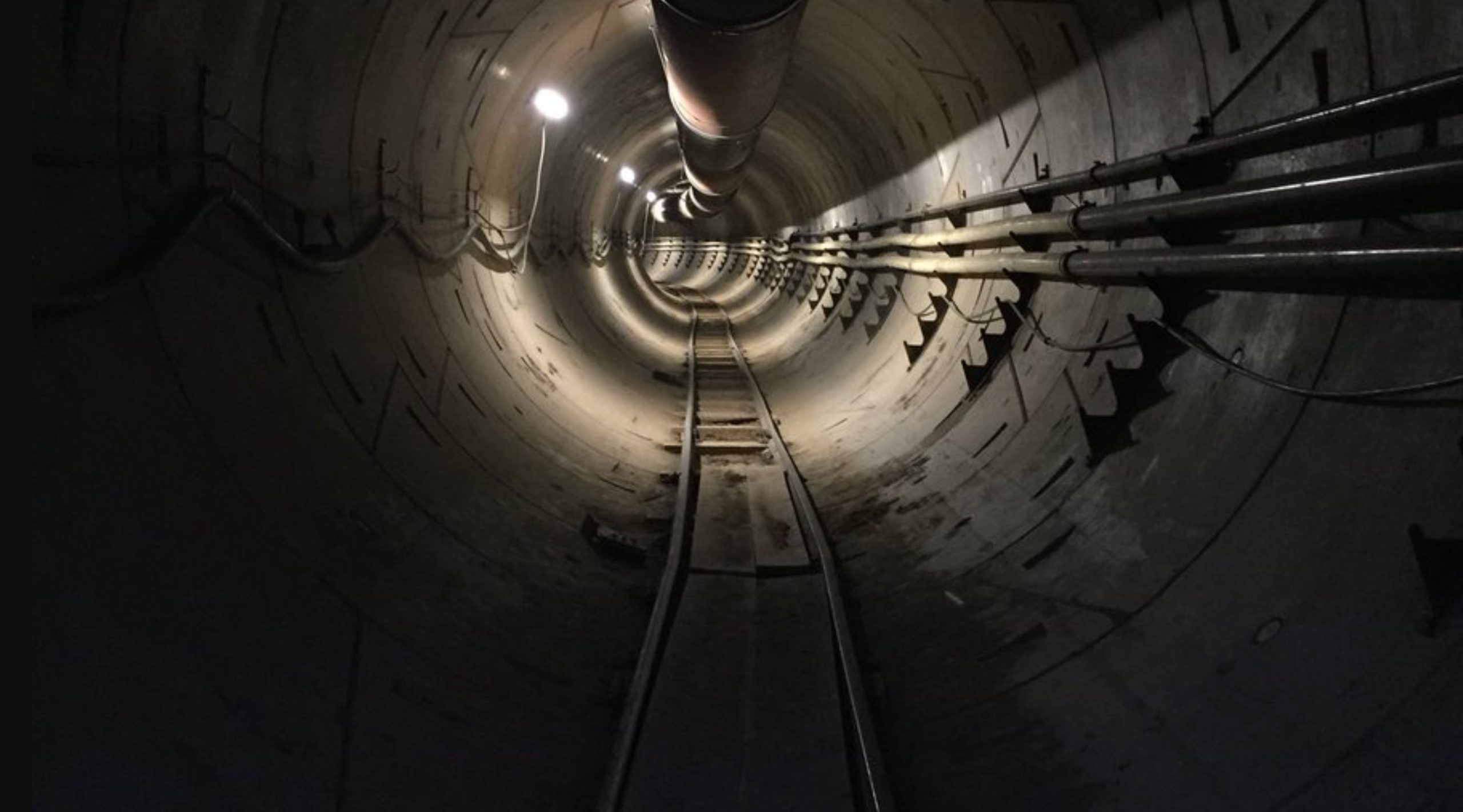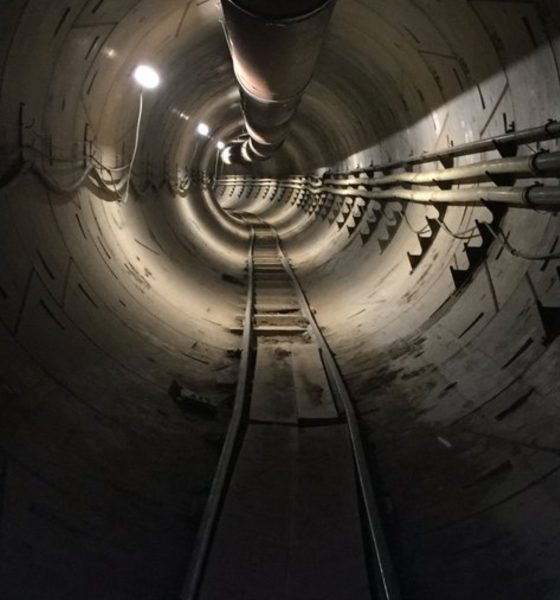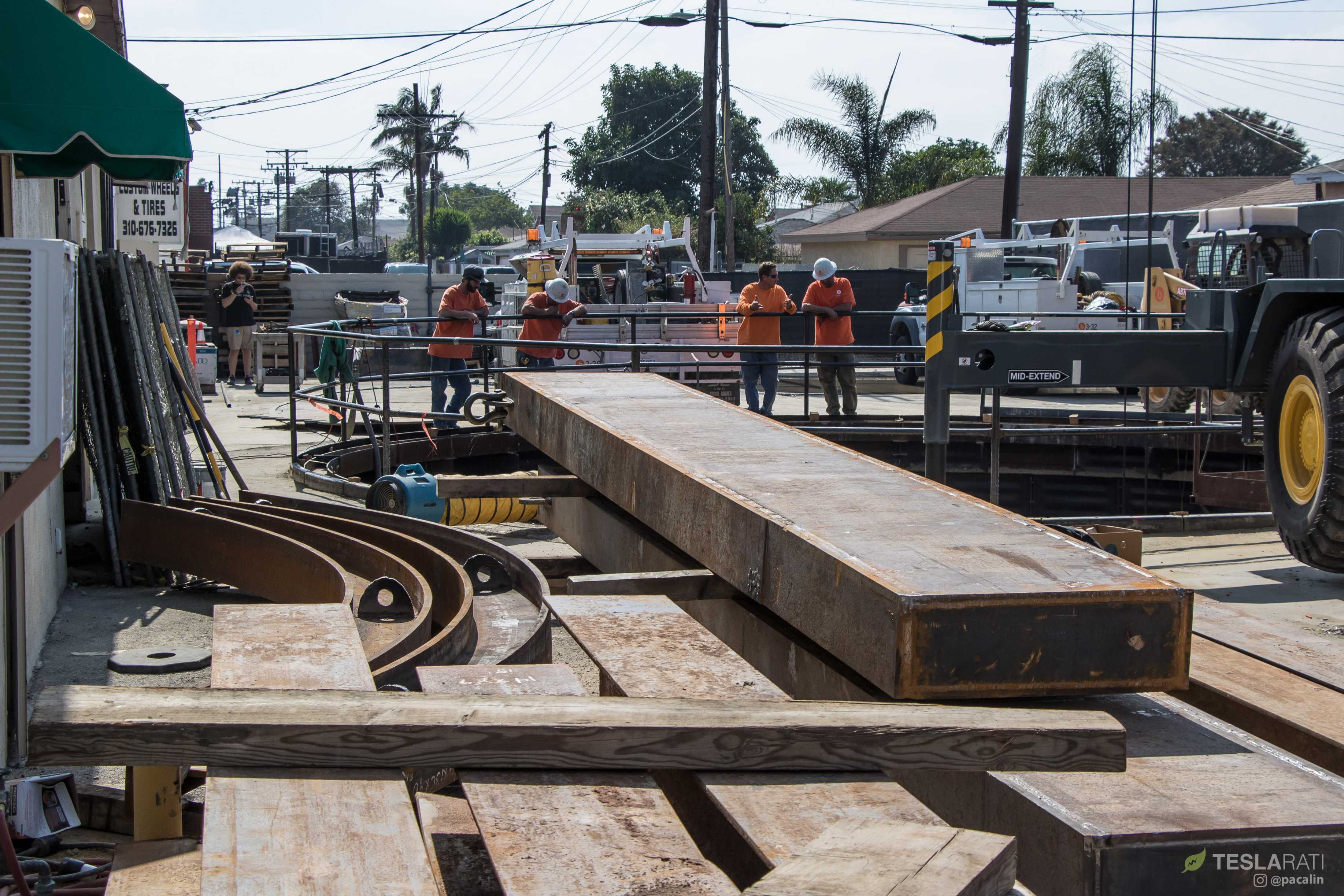

News
The Boring Company is open to building tunnels for utility lines, says Elon Musk
Concepts of The Boring Company’s futuristic, ultra-high-speed tunnels show a sleek system transporting passenger pods and private vehicles at speeds of around 124 mph (200 km/h). As revealed recently by Elon Musk during a “fireside chat” in Los Angeles, though, the tunneling startup is also open to building tunnels that are far less glamorous.
While addressing around 3,800 mayors and city officials from across the United States at the National League of Cities’ 2018 City Summit last week, Elon Musk stated that the Boring Company’s technology could be used to build tunnels for utility lines. Candidly conversing with LA Mayor Eric Garcetti, Musk noted that his tunneling startup would even take on projects like sewer lines in the future.
“The Boring Co. is also going to do tunneling for, like, water transport, sewage, electrical. We’re not going to turn our noses up at sewage tunnels. We’re happy to do that too,” Musk said.
The Boring Company is built on the premise that current tunneling technologies and techniques still have areas for improvement. Just by reducing the size of the tunnels themselves, for one, The Boring Company expects to reduce tunneling costs by a factor of four. Elon Musk has also mentioned that the company is designing and building an all-electric tunnel boring machine, which would be capable of digging 10-15 times faster than a traditional TBM. Being small, the Boring Company’s tunnels are also capable of maintaining a vacuum, making them capable of supporting Hyperloop transportation systems in the future.
Ultimately, using The Boring Company’s tech to build tunnels for utility lines could prove strategic for cities. In a statement to Forbes, Constantine Samaras, an associate professor of civil and environmental engineering at Carnegie Mellon University, noted that the Boring Company’s faster, cheaper, and smaller tunnels would likely be a big benefit to cities.
“A lot of these systems (power, water, communications, and sewer lines) are old and in bad shape. Often, fixing utilities means cutting open the street and disrupting traffic. If the Boring Co. can use their tunneling technology to make it faster and cheaper to install and upgrade underground utilities, it will be a big benefit to cities,” Samaras stated.

Elon Musk might have found the Boring Company’s first customer for its sewage tunneling services too. During his chat with Musk, LA Mayor Garcetti candidly asked the Tesla and SpaceX CEO if Los Angeles could get the first sewage tunnel from The Boring Company. Elon Musk answered in the affirmative.
As the Boring Company prepares its Hawthorne test tunnel for its public showing on December 10, the company is also hard at work building its prototype garage-elevator concept at a private lot in 120th Street and Prairie Avenue. Photographs taken by Teslarati photographers Pauline Acalin and Tom Cross indicate that the Boring Company is moving fast to complete its futuristic garage-elevator concept, while constructing what appears to be a gantry for the tunnel boring machine it would use for its high-profile high-speed tunnel project in Chicago.
The Boring Company has the potential to disrupt several industries. With its high-speed tunnels, the tunneling startup could usher in an alternative, sustainable, and more efficient way of transportation. The company also has the potential to disrupt the low-cost housing market thanks to the Boring Bricks, which Musk estimates would cost around 10 cents per brick.

News
Tesla FSD fleet is nearing 7 billion total miles, including 2.5 billion city miles
As can be seen on Tesla’s official FSD webpage, vehicles equipped with the system have now navigated over 6.99 billion miles.

Tesla’s Full Self-Driving (Supervised) fleet is closing in on almost 7 billion total miles driven, as per data posted by the company on its official FSD webpage.
These figures hint at the massive scale of data fueling Tesla’s rapid FSD improvements, which have been quite notable as of late.
FSD mileage milestones
As can be seen on Tesla’s official FSD webpage, vehicles equipped with the system have now navigated over 6.99 billion miles. Tesla owner and avid FSD tester Whole Mars Catalog also shared a screenshot indicating that from the nearly 7 billion miles traveled by the FSD fleet, more than 2.5 billion miles were driven inside cities.
City miles are particularly valuable for complex urban scenarios like unprotected turns, pedestrian interactions, and traffic lights. This is also the difference-maker for FSD, as only complex solutions, such as Waymo’s self-driving taxis, operate similarly on inner-city streets. And even then, incidents such as the San Francisco blackouts have proven challenging for sensor-rich vehicles like Waymos.
Tesla’s data edge
Tesla has a number of advantages in the autonomous vehicle sector, one of which is the size of its fleet and the number of vehicles training FSD on real-world roads. Tesla’s nearly 7 billion FSD miles then allow the company to roll out updates that make its vehicles behave like they are being driven by experienced drivers, even if they are operating on their own.
So notable are Tesla’s improvements to FSD that NVIDIA Director of Robotics Jim Fan, after experiencing FSD v14, noted that the system is the first AI that passes what he described as a “Physical Turing Test.”
“Despite knowing exactly how robot learning works, I still find it magical watching the steering wheel turn by itself. First it feels surreal, next it becomes routine. Then, like the smartphone, taking it away actively hurts. This is how humanity gets rewired and glued to god-like technologies,” Fan wrote in a post on X.
News
Tesla starts showing how FSD will change lives in Europe
Local officials tested the system on narrow country roads and were impressed by FSD’s smooth, human-like driving, with some calling the service a game-changer for everyday life in areas that are far from urban centers.

Tesla has launched Europe’s first public shuttle service using Full Self-Driving (Supervised) in the rural Eifelkreis Bitburg-Prüm region of Germany, demonstrating how the technology can restore independence and mobility for people who struggle with limited transport options.
Local officials tested the system on narrow country roads and were impressed by FSD’s smooth, human-like driving, with some calling the service a game-changer for everyday life in areas that are far from urban centers.
Officials see real impact on rural residents
Arzfeld Mayor Johannes Kuhl and District Administrator Andreas Kruppert personally tested the Tesla shuttle service. This allowed them to see just how well FSD navigated winding lanes and rural roads confidently. Kruppert said, “Autonomous driving sounds like science fiction to many, but we simply see here that it works totally well in rural regions too.” Kuhl, for his part, also noted that FSD “feels like a very experienced driver.”
The pilot complements the area’s “Citizen Bus” program, which provides on-demand rides for elderly residents who can no longer drive themselves. Tesla Europe shared a video of a demonstration of the service, highlighting how FSD gives people their freedom back, even in places where public transport is not as prevalent.
What the Ministry for Economic Affairs and Transport says
Rhineland-Palatinate’s Minister Daniela Schmitt supported the project, praising the collaboration that made this “first of its kind in Europe” possible. As per the ministry, the rural rollout for the service shows FSD’s potential beyond major cities, and it delivers tangible benefits like grocery runs, doctor visits, and social connections for isolated residents.
“Reliable and flexible mobility is especially vital in rural areas. With the launch of a shuttle service using self-driving vehicles (FSD supervised) by Tesla in the Eifelkreis Bitburg-Prüm, an innovative pilot project is now getting underway that complements local community bus services. It is the first project of its kind in Europe.
“The result is a real gain for rural mobility: greater accessibility, more flexibility and tangible benefits for everyday life. A strong signal for innovation, cooperation and future-oriented mobility beyond urban centers,” the ministry wrote in a LinkedIn post.
News
Tesla China quietly posts Robotaxi-related job listing
Tesla China is currently seeking a Low Voltage Electrical Engineer to work on circuit board design for the company’s autonomous vehicles.

Tesla has posted a new job listing in Shanghai explicitly tied to its Robotaxi program, fueling speculation that the company is preparing to launch its dedicated autonomous ride-hailing service in China.
As noted in the listing, Tesla China is currently seeking a Low Voltage Electrical Engineer to work on circuit board design for the company’s autonomous vehicles.
Robotaxi-specific role
The listing, which was shared on social media platform X by industry watcher @tslaming, suggested that Tesla China is looking to fill the role urgently. The job listing itself specifically mentions that the person hired for the role will be working on the Low Voltage Hardware team, which would design the circuit boards that would serve as the nervous system of the Robotaxi.
Key tasks for the role, as indicated in the job listing, include collaboration with PCB layout, firmware, mechanical, program management, and validation teams, among other responsibilities. The role is based in Shanghai.
China Robotaxi launch
China represents a massive potential market for robotaxis, with its dense urban centers and supportive policies in select cities. Tesla has limited permission to roll out FSD in the country, though despite this, its vehicles have been hailed as among the best in the market when it comes to autonomous features. So far, at least, it appears that China supports Tesla’s FSD and Robotaxi rollout.
This was hinted at in November, when Tesla brought the Cybercab to the 8th China International Import Expo (CIIE) in Shanghai, marking the first time that the autonomous two-seater was brought to the Asia-Pacific region. The vehicle, despite not having a release date in China, received a significant amount of interest among the event’s attendees.








